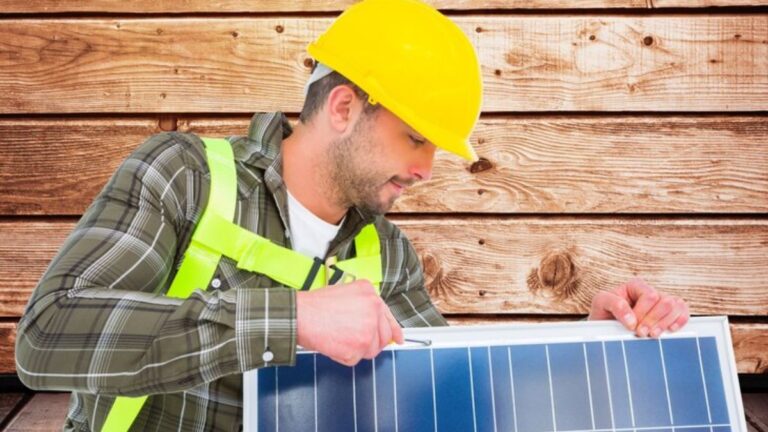After investing in a solar battery system, proper maintenance is essential to ensure your system operates at maximum efficiency for years. Solar battery systems offer a great opportunity to store excess energy from your solar panels, but keeping them in good condition requires attention to specific factors. We will explore the crucial steps to maintain your solar battery system and ensure it functions effectively. Whether you’re familiar with solar energy or just starting, understanding these maintenance tips will help you maximize your investment.
Regular Battery Inspection and Monitoring
A key aspect of maintaining your solar battery system is conducting regular inspections by solar providers and monitoring its performance. Regularly inspecting the battery helps identify any potential issues early before they become significant problems. Check for physical damage to the battery housing or any signs of corrosion on the terminals. Corrosion can reduce the system’s efficiency and shorten the battery’s lifespan. Monitoring the battery’s charge and discharge cycles is crucial, as abnormal patterns could indicate that the system is not operating optimally. Most solar batteries have monitoring systems that allow users to track performance data such as battery health, capacity, and voltage levels. Utilizing these monitoring tools will help you ensure your battery is running efficiently and enable you to detect any sudden drops in performance. By making a habit of regular battery inspections and using monitoring systems, you can maintain your solar battery in top working condition.
Keep the Battery Clean and Free of Debris
Another simple but essential step in solar battery maintenance is keeping the battery clean and debris-free. Dust, dirt, or debris accumulating on the surface of the battery can interfere with heat dissipation, potentially causing overheating. Overheating is a serious issue that can reduce the lifespan of your battery and affect its performance. Depending on the environment where your battery is installed, you may need to clean the battery surface periodically. Use a soft, dry cloth to clean the battery, and avoid using water or harsh chemicals that could damage the components. If your battery is installed in an outdoor enclosure, regularly inspect the area for leaves, insects, or other debris that might clog ventilation areas or ports. Additionally, ensure that the surrounding area of the battery is well-ventilated and free from obstructions that could limit airflow. This simple maintenance routine will prevent overheating and ensure the battery can perform optimally.
Temperature Control and Storage Considerations
Solar batteries are sensitive to temperature extremes, and managing the environment around your battery is critical to system maintenance. Batteries perform most efficiently when kept at moderate temperatures, usually between 20°C and 30°C (68°F to 86°F). High temperatures can accelerate wear and tear on battery components, while very low temperatures can reduce the battery’s ability to charge or discharge effectively. If your battery is installed in a location that experiences temperature extremes, you may need to implement additional measures to protect it. For example, consider installing fans or heat sinks in hot climates to help dissipate heat. In colder regions, installing insulation or temperature control systems can help keep the battery from becoming too cold. Also, consider the battery’s placement within your home or building. Indoor installations offer better temperature control, while outdoor installations may require extra protection against the elements. By taking proactive steps to manage temperature, you can extend the lifespan of your solar battery and improve its overall performance.
Check for Firmware and Software Updates
Solar battery systems often come equipped with digital controls and monitoring systems that rely on software. To ensure the smooth operation of your system, it is important to check regularly for any firmware or software updates. Manufacturers may release updates to improve your battery system’s performance, security, or efficiency. These updates may also fix bugs or add new features to enhance the overall experience. Staying current with the latest software versions ensures your battery operates efficiently and reduces the risk of system errors. Some solar batteries have automatic update features, but it’s still good practice to manually check the manufacturer’s website or consult your installation service provider for the latest updates. If you’re unsure how to perform updates or what changes an update might introduce, refer to the product’s user manual or consult customer service. Regularly updating your solar battery’s software can prevent issues related to outdated firmware and maintain the reliability of your system.
Maintaining your solar battery system is essential to ensuring its longevity and efficiency. By regularly inspecting the battery, keeping it clean, managing temperature, updating firmware, optimizing battery cycling, and scheduling professional check-ups, you can prevent common issues and maximize the performance of your system. Solar energy is an investment in sustainability and cost savings; proper maintenance helps you make the most of that investment. By following these guidelines, your solar battery system will continue providing reliable, renewable energy for years.

